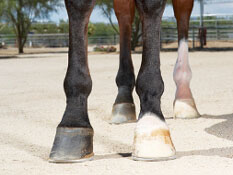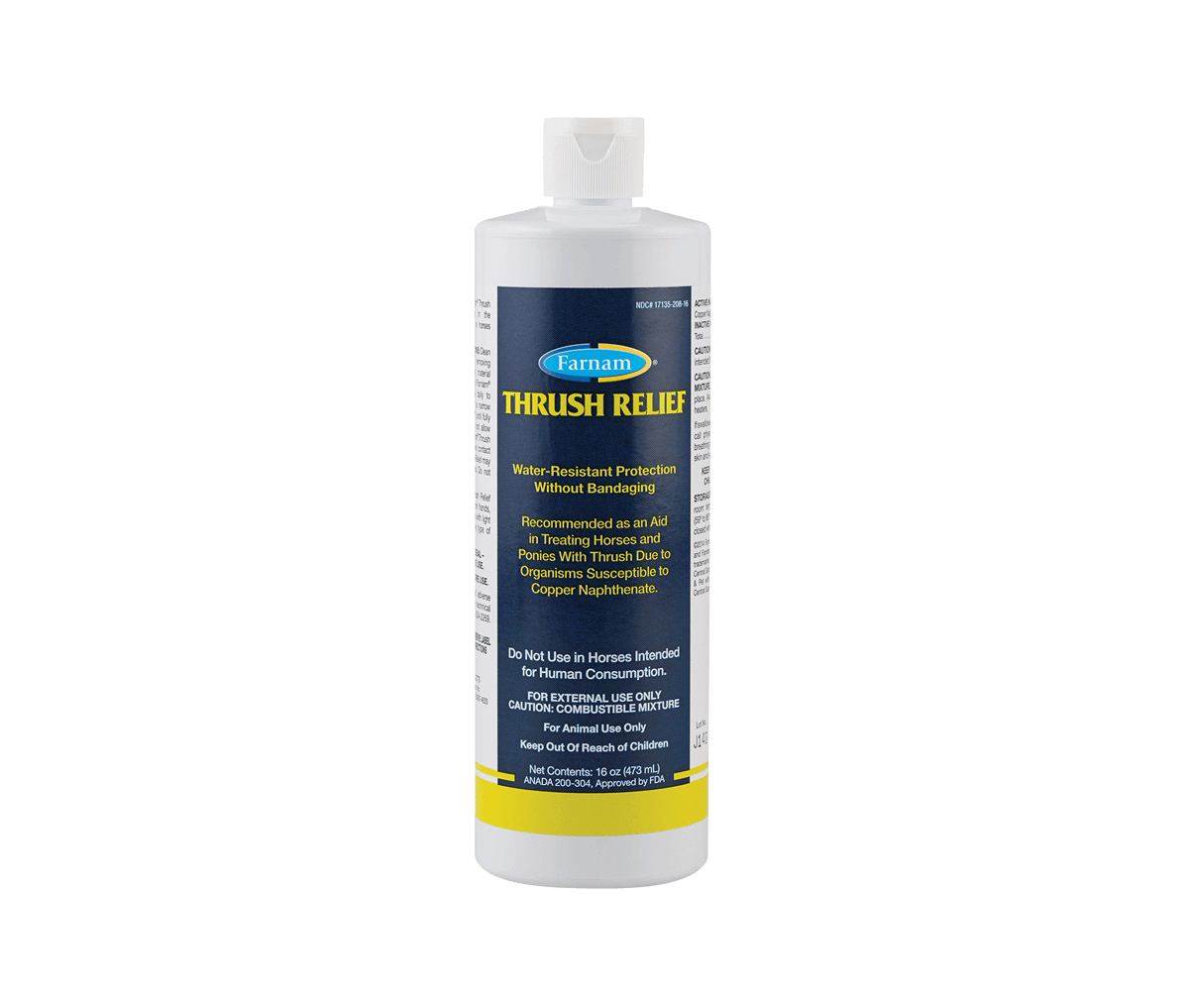Nutrition and A Horse's Hoof

While most horse owners are not worried about the loss of a kingdom, they do understand the importance of a quality hoof on a horse. A hoof wall has to be structurally sound to hold the nail that holds the shoe. When the hoof wall is compromised, the loss of a shoe is only one consequence. It could also result in the loss of a race, ribbon, trophy or even a day of trail riding.
For many years, popular articles and some scientific literature have touted the need for certain nutrients that may impact hoof quality to be included in the diet. Some scientific literature supports the use of these nutrients. Biotin, a sulfur containing B-vitamin that supplies sulfur for sulfhydryl bond formation, is often referenced as critical for hoof quality. Many assume the biotin content of a hoof supplement must be 20 mg or more per unit of intake, but scientific literature has shown hoof benefit in horses fed 15 mg to 30 mg per day of biotin. However, larger horses, e.g., draft, require a higher daily intake to see positive changes in the hoof.
Equally important and often overlooked is the need for other sources of sulfur. Methionine, a sulfur containing dietary essential amino acid, supplies sulfur through the conversion to cysteine, another amino acid, which is then used in disulfide bond formation, which is critical for hoof wall strength.
Other nutrients that impact hoof growth include lysine, zinc, copper and calcium. Additionally, the horse must be consuming adequate water, energy, protein, other vitamins and minerals to support their daily dietary requirements.
In order to “feed the hoof,” we must first feed the horse to ensure that the total dietary requirements are being met. For a horse owner with a horse who has poor-quality hooves even with adequate nutrition, what can be done to help minimize the issue? Assuming your horse's poor hoof quality is not due to genetics, disease or injury, some nutritional approaches may help. Many horses with hoof issues will benefit from added biotin, methionine, lysine and specific trace minerals such as copper and zinc.
In order to “feed the hoof” we must first feed the horse to ensure that the total dietary requirements are being met.
Unlike feeding some types of supplements where a change is noticeable in days or weeks, it will take longer to see improvements in hoof growth or quality. Hoof wall grows from the coronet band at a rate of 1/2” to 3/8” per month, or takes about 12 months for a new hoof to form.
In summary:- You must feed the whole horse—balanced nutrition first.
- Hoof wall growth is slow, 1/2" to 3/8" per month.
- Quality hoof supplements can help.
- Genetics, environment, age and breed all play a part in hoof quality.
*Poor Richard’s Almanac, 1758
Life with Horses Newsletter
Sign up now to stay connected with free helpful horse care tips, product updates, and special offers.
Related Articles
Feeding the Hoof
No matter what breed your horse is, no matter how young or old he may be, no matter what style of riding you enjoy, it all comes down to soundness. You won’t get far without it. It might be that poor feet or lameness concerns are limiting your horse’s potential, or even interrupting your riding schedule. Or perhaps your horse isn’t having trouble now, but you have serious riding goals and don’t want anything to interfere. Any of these situations are reason enough to stop and ask yourself: “Am I doing everything possible to ensure the health and soundness of my horse? Can I do anything more to help strengthen his foundation?”...







